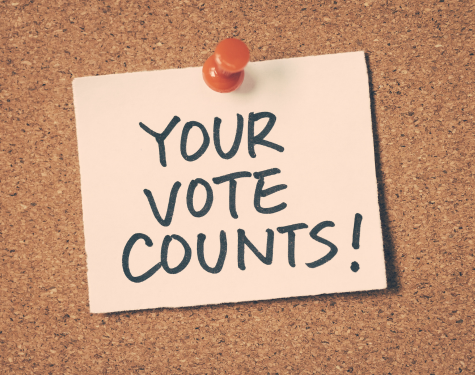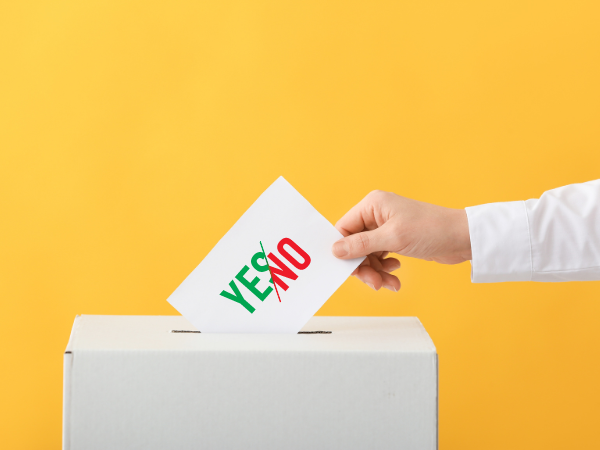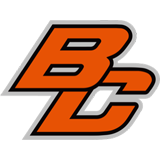What schools should NOT do when communicating bond proposal information.
What makes communicating bond issues so tricky is that, unlike other forms of school marketing, there are regulations on what and how a school is allowed to share about bonds. The following are four factors U.S. based schools need to keep in mind when crafting their messaging.

Note: While these are general best practice guidelines, we highly recommend consulting with the proper legal/educational counsel when it comes to specific messaging.
1. Advocacy
Remaining objective is both difficult and important. School districts and their employees must avoid advocating for or against a bond proposal during the course of their official duties; remaining neutral and providing only factual information without expressing personal opinions or even promoting a specific outcome.
2. Endorsements
While individual employees may express their personal opinions on a bond proposal, they must avoid doing so in their official capacity or while representing the school district.
3. Misleading Information
School districts are held responsible for ensuring the information they share is accurate. They should avoid sharing misleading or false information that could potentially sway voter opinion. Ex: Sharing selective data points that omit the full picture.
4. Use of Public Resources
School districts are generally prohibited from using public resources (including staff time, facilities, and equipment) to campaign for or against a bond proposal. This includes distributing campaign materials, hosting events, or utilizing district communication channels for promotional purposes. However, dedicating a specific section of a website is allowed as long as it adheres to the aforementioned points.
7 key ways to help your community understand the importance of a bond proposal
While there are unique restrictions on how a district can present bond information, you should never let that dissuade you from creating an informational campaign on your website! The following tactics can help you make a compelling and authentic case to build support for your bond proposal.
1. Use Visuals:
Visuals are great for attracting people’s attention and help convey complex information. Use high-quality images, videos, and infographics to showcase the bond proposal on your school’s website. Visuals can also drive engagement and ensure the school community is informed and aware of the importance of the bond measure.
Bonus Resource: How to create engaging, cost-effective, and high-quality school videos
2. Highlight Key Points
People are usually pressed for time, and not everyone may have the patience or interest to go through a proposal in detail. Highlighting key points in bullet points or summaries can help simplify the information and make it easier to understand. This can be achieved by grouping critical information together, in a way that is easy to read or scan.
Recognizing the need for a website solution to clearly and quickly communicate a bond initiative’s value, Foxbright offers school districts a dedicated bond proposal landing page. This standalone webpage is an easy and affordable way to organize your content in a visually appealing, and SEO rich way to the public.

3. Make it Accessible
Accessibility is key when it comes to communicating important information to the public. Ensure that your school’s website is optimized for accessibility. For example, use a font size that is easy to read, avoid dense text blocks, and ensure that the website is mobile-friendly. Having the bond proposal available in different languages or using sign language accessible videos are other ways to ensure that the information is accessible to everyone. For more information on ensuring your site is fully accessible, check out our 2023 ADA Website Compliance Checklist.
4. Tell Your Story
A bond proposal is not just about the technical terms and requirements; it’s also a story about why the school needs the bond proposal. This is the pivotal time to explain the value of your school’s brand. Use real-life stories to illustrate the bond proposal’s importance in improving learning environments and enhancing opportunities for students. The story can be told through videos, photographs, testimonials (but not endorsements!), and narratives.
|
In this school website branding article, we provide a free, one-page branding guide you can use to consolidate and focus your messaging. |
One creative way we’ve seen to add context to a story is by using an interactive tax calculator. This built in feature on the Foxbright landing page works so well because it allows visitors to learn how the bond will specifically affect them.
5. Provide a Q&A section
Many stakeholders may have questions about the bond proposal, such as how it will affect their taxes or the timeline for the project. To address these concerns, it's important to provide a Q&A section on your school website. This section should include common questions and answers about the bond proposal and the school project. It can also include links to additional resources for those who want to learn more.
Example: Using the Foxbright accordion feature, Eastpointe Community Schools has created an easily accessed and well organized information section that explains the specific impact for each school in their district.

6. Have a Call to Action
The objective of showcasing a bond proposal on your school website is to encourage people to support the proposal. To achieve this, the website should have a clear call to action that encourages people to take action, such as encouraging them to show up to vote and/or get involved.
Again, the key here is making sure that your call to action doesn’t explicitly push them towards one point of view, but rather to take an actionable step. If you’ve done a good job of telling your story, then chances are in your favor that website visitors will align with your goal.
7. Keep the website up-to-date
Finally, it's important to keep the website up-to-date with the latest information about the bond proposal and the school project. This includes updating information about the timeline, costs, and any changes to the project. By keeping the website up-to-date, you show that you are committed to providing transparent and accurate information to stakeholders.
 Conclusion:
Conclusion:
School bond proposals can be challenging to pass, but by showcasing them on a specific place on your school website, you can generate support for the projects. By using visuals, sharing your story, providing a Q&A section, and keeping the website up-to-date with a clear call-to-action, you can help sway public opinion in favor of the bond proposal.
Remember, the key to success is transparency and providing all the relevant information to stakeholders. By doing so, you can create a better learning environment for your students and help your community prosper.
With fully built-out bond proposal landing pages starting at just $699, don’t delay in getting your important campaign off the ground. Request a proposal here to learn more on how to get started.
















